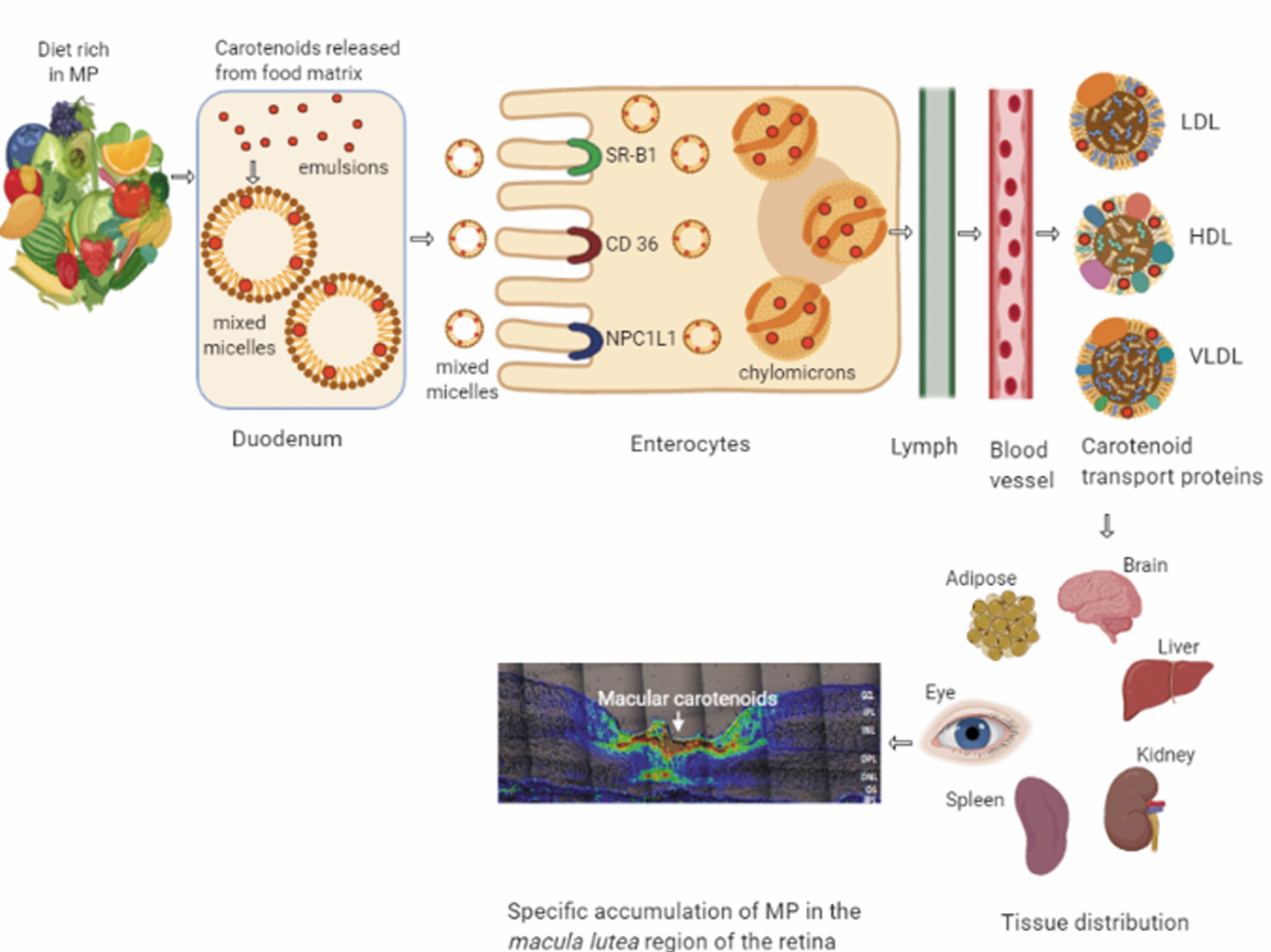Curiosity has an interesting way of influencing lives. For Paul S Bernstein MD, PhD, a clinician-scientist, academic curiosity led to a focused clinical and basic science research career understanding of the role specialised nutrients play in retinal physiology and macular disease protection.
Speaking at the ARVO 2021 virtual meeting as the recipient of the Mildred Weisenfeld Award for Excellence in Ophthalmology, Dr Bernstein reviewed his work to delineate the biochemistry and biophysics of retinoids, carotenoids, and very-long-chain polyunsaturated fatty acids (VLC-PUFAs). He also described the translational implications of the findings from the laboratory investigations of these compounds, which are essential for retinal health.
Vice-Chair for Clinical and Basic Science Research, Moran Eye Center, University of Utah, Salt Lake City, USA, Dr Bernstein began his lecture by explaining the importance of ocular nutrition research.
“The underlying cause of many eye diseases logically points to nutritional interventions, and they often have fewer side effects than pharmacological interventions. Patient compliance with nutritional interventions can be excellent, they are often relatively low cost, and there can be strong patient and clinician interest in such interventions. This is something that attracted me to this field ever since I started work on my PhD in the 1980s.”
SEEING THE PROBLEM
He described his doctorate research on retinoid chemistry in the eye that identified how an enzyme catalyses the isomerisation of all-trans-retinoids to 11-cis-retinoids—later named RPE65— which led to the modern description of the visual cycle.
“This basic science work has been successfully translated into the clinic. Clinical trials are investigating whether pharmacological inhibition of RPE65 has a benefit for Stargardt disease and AMD. Even more importantly, RPE65 gene therapy is an FDA-approved treatment for a form of Leber congenital amaurosis,” Dr Bernstein said.
CONCENTRATING ON CAROTENOIDS
After receiving his PhD and joining the Moran Eye Center, Dr Bernstein turned his research focus to the basic biochemistry of understanding how and why carotenoids uniquely concentrate in the human eye. This work led to the identification of the binding proteins that drive the retinal deposition of lutein, zeaxanthin, and meso-zeaxanthin; retinal mapping of the localisation of lutein and zeaxanthin; and the determination that RPE65 likely mediates the isomerisation of lutein to meso-zeaxanthin.
The lab went on to create a transgenic “macular pigment” mouse that could serve as an animal model for studying ocular carotenoids in human eye disease. Experiments using this mouse showed carotenoid delivery to the retina enhances visual function and inhibits A2E formation.
“Thus, we show there could be potential benefit from carotenoid supplementation to patients with recessive Stargardt disease (STGD1),” he said.
Dr Bernstein also led the development of non-invasive methods for in vivo measurement of carotenoids in the eye and skin. Having subsequently shown ocular carotenoids were present at birth at a level correlating with maternal serum zeaxanthin, he serves as the principal investigator for an ongoing clinical study investigating the effects of adding lutein and zeaxanthin to prenatal supplements.
SHIFTING FOCUS
Most recently, Dr Bernstein has turned his attention to VLC-PUFAs. He explained that these compounds, which are not present in an ordinary human diet, are unique to the retina and a few other tissues in the body.
Thought to provide membrane fluidity and structural integrity for photoreceptor disks, VLC-PUFAs are precursors for neuroprotective elovanoids in the RPE. Dysfunction of the enzyme responsible for in vivo synthesis of VLC-PUFAs from shorter chain dietary PUFAs leads to autosomal dominant Stargardt-like macular dystrophy (STGD3). Having developed sensitive methods for measuring VLC-PUFAs in the retina, Dr Bernstein and co-workers showed these compounds also deplete in eyes with AMD and diabetic retinopathy (DR).
Using a synthetic VLC-PUFA developed in conjunction with colleagues from the chemistry department, the team conducted experiments in animal models of STGD3 that demonstrated its oral delivery led to increased VLC-PUFA levels in the retina and positive functional effects.
“Supplementation with VLC-PUFAs or their precursors deserves further exploration in clinical trials, possibly even in a future AREDS3 trial. We speculate that nutritional supplement with VLC-PUFAs could also be a nutritional approach to treating STGD1,” Dr Bernstein said.
PRACTICING HEALTHY HABITS
In addition to his work as a basic science and clinical researcher, Dr Bernstein is a practicing clinician. He concluded his lecture by sharing the advice he gives to patients about ocular nutrition. “I still advise all of my patients to eat an ‘eye-healthy’ diet with lots of fruits, vegetables, and fish. I certainly encourage an AREDS2 supplement with 10mg lutein and 2mg zeaxanthin for individuals at high risk for AMD, but I advise them to wait on other single-nutrient supplements and herbals until more data are available. And I certainly encourage patients to support and participate in high-quality nutritional clinical studies and basic science research.”
Paul S Bernstein: paul.bernstein@hsc.utah.edu


